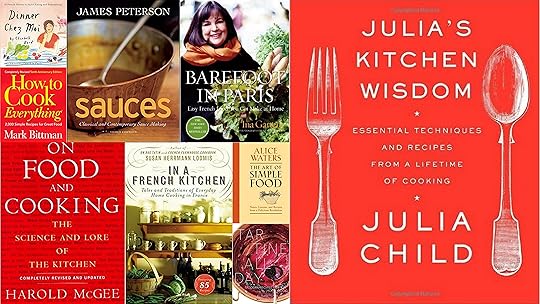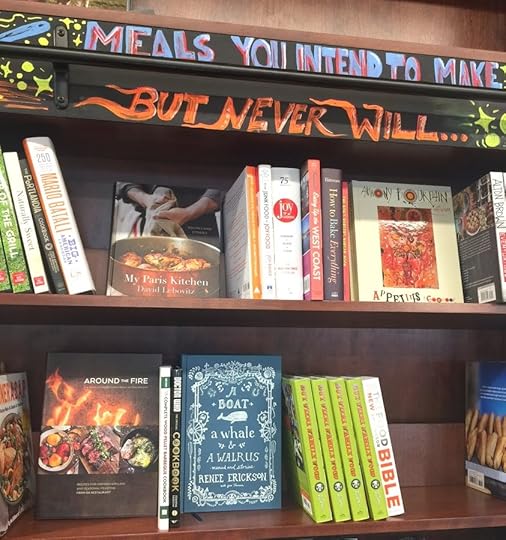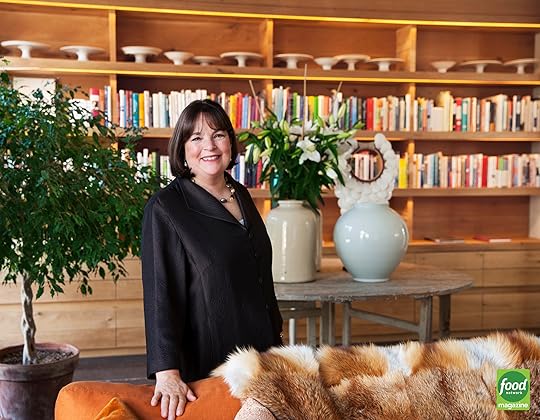Why Not . . . Read a Cookbook for Pleasure?

“Yet every recipe, whether we cook it or not, offers a vision of the good life, and a way of tasting food in your brain.” —Bee Wilson, The New Yorker
The sizzle of the aromatic ingredients having been finely chopped and dropped atop the olive oil or butter into a pre-heated skillet. The steady hum of the bubbles in a pot poised for fresh pasta to be dropped and the splash of red wine greeting the stemmed glass.
Cooking after work has wrapped up and the day is unwinding has always been therapeutic for me. The stoppage of time, the anticipation of the meal being created, the dance in the kitchen if cooking with a loved one as we work together. The seemingly simple, yet soothing sounds created in the kitchen during the build up to the meal’s presentation are a melody I never tire to hear.
But for as much as I love to cook, there are always a hundred multiplied by infinity recipes I have yet to try and want to, as well as numerous approaches and techniques and lessons I am curious to learn but still have yet to. However, this fact does not stop me from halting my purchase of cookbooks.
While my library of cookbooks is in its infant stage compared to that of the Barefoot Contessa (see above, Ina Garten in front of her cookbook library that is regularly in use – see a select list of Ina Garten’s cookbook favorites here), mine is certainly burgeoning.
I was reminded of how much I enjoy reading cookbooks for pleasure when Susan Hermann Loomis‘ cookbook In a French Kitchen was released last year and I didn’t want it to end. Similar to a cozy mystery that transfixes me primarily because of the details, setting and characters rather than the murder plot itself, I just want to roam the community some more, read more about the food and the gardens and dawdle with the secondary characters if possible. Hermann Loomis skillfully sprinkles a few recipes at the end of each chapter which corresponded with each season, and it was the stories, details and images of home cooks in their kitchens which she painted in my mind’s eye that kept me spellbound. (View one of my favorite recipes from the cookbook here.)
At the moment, my cookbook of leisure reading is Elizabeth Bard’s newly released Francophile must-have Dinner Chez Moi: 50 French Secrets to Joyful Eating and Entertaining. Full of personal stories and anecdotes paired with the French approach to eating, as well as of course recipes, upon opening the book I feel temporarily transported to Provence where this New Yorker now calls home with her family.

While the truth may be we never actually make most of the recipes we read about (I had to chuckle when I read the above text in the Cookbook section at my local bookshop), cookbooks are a soothing recipe to slip into no matter what time of day. No tragedy, no news, no unexpected surprises (excepted maybe a renewed appetite). Simply deliciously curated flavors, often exquisite photography and inspiration and motivation that we too can create something beautiful, nourishing and brilliant in our own homes.
So if by chance you are looking for a good book to read at the moment and wish to learn something, but also unwind and relax, why not pick up a cookbook? While the cookbooks included in today’s post are ones I highly recommend or come highly recommended to me (all but two I have on in my kitchen), there are so many more I could share, but this list will certainly get you started.
You’ll find a brief description of each, but if you are looking for more ideas and titles, you can always stop by my TSLL Shop, click on “Cookbooks” in the drop-down menu and discover my entire list of cookbook recommendations that is regularly updated each week.
~The Art of Simple Food: Notes, Recipes and Lessons from a Delicious Revolution by Alice Waters
The west coast food expert who brought to the attention of the country and the modern world of cooking the value of seasonal, local and sustainably produced foods. The key as she reminds is something many different cultures outside of the United States have known for centuries, use quality, seasonal ingredients. Encouraging her readers to grow a garden, cook simply, cook together and be mindful of the food and its origins, her first chapter alone will prompt you to annotate frequently (if you’re like me) and feel confident you have a grasp on the foundations of a kitchen that can create delicious food simply.
~Julia’s Kitchen Wisdom: Essential Techniques and Recipes from a Lifetime of Cooking by Julia Child
After “getting to know” Julia Child in Dearie, As Always, Julia and now My Life in France, and relying on Mastering the Art of French Cooking for any cooking questions that she might answer, next on my list to read is Julia’s Kitchen Wisdom. Published in 2000, Julia offers answers to the seemingly simple, but pesky questions we would like to know the answers to: the proper proportions for vinaigrette, the quickest way to sauté, tips and tricks for bread making, ideas for soups and much more. I cannot wait to get my hands on it.
~Sauces: Classic and Contemporary Sauce Making by James Peterson
A tome of a cookbook, dive into the first chapter and become acquainted with the history of sauce making through the centuries, then shift to the necessary and proper equipment in chapter two followed by the ingredients and finally, the subsequent chapters each focus on a particular type of sauce, offering a wide variety of different options (brown sauces, crustacean sauces, mayonnaise-based sauces, egg yolk aces, butter sauces, etc.) In other words, if you are curious about how to become a better French gourmand in the kitchen, pick up this resource for sauce making now.
~Tartine All Day: Modern Recipes for the Home Cook by Elisabeth Prueitt
The scrumptious descriptions of each recipe will leave you ready for a meal or a snack no matter how full you may be upon opening the latest cookbook by San Francisco’s Tartine bakery and restaurant co-founder Elisabeth Prueitt. And with simple recipes with magnified, surefire flavor, you will gaze at each image and feel confident you too can make what she describes.
~How to Cook Everything: 2000 Simple Recipes for Great Food by Mark Bittman
Learn the simple techniques of everyday cooking, discover the power of quality, fresh, natural ingredients and come to understand that you don’t need complicated gadgetry, but instead just basic equipment to be successful in the kitchen.
~Barefoot in Paris: Easy French Food You Can Make at Home by Ina Garten
Each of Barefoot Contessa’s cookbooks are a treat to read when they arrive, and her latest Cooking for Jeffrey was no exception. What I especially enjoyed about Barefoot in Paris were the photography of Ina’s favorite stops in the city (Poilâne in St. Germaine for example) and the commentary in each chapter about specific French ways of cooking, shopping for cookware, setting the table and other experiences of Ina’s while spending time in France. (did you know she ha pied-à-terre in the city? See it here.)
~On Food and Cooking: The Science and Lore of the Kitchen by Harold McGee
Recommended by Ina Garten and currently in her cookbook library, this book is on my wish list. Described as a kitchen classic and highly reviewed by more than 500 readers, since being published in 1984, it is best described as the go-to resource “for an understanding of where our foods come from, what exactly they’re made of, and how cooking transforms them into something new and delicious”. A wonderful and informative read indeed.
“Sometimes, it’s enough to dream how things might be, in a fictitious kitchen where the “spargus” comes straight from the garden and the butter is always fresh.” -Bee Wilson, author of First Bite: How We Learn to Eat
Image of Ina Garten from The Food Network




